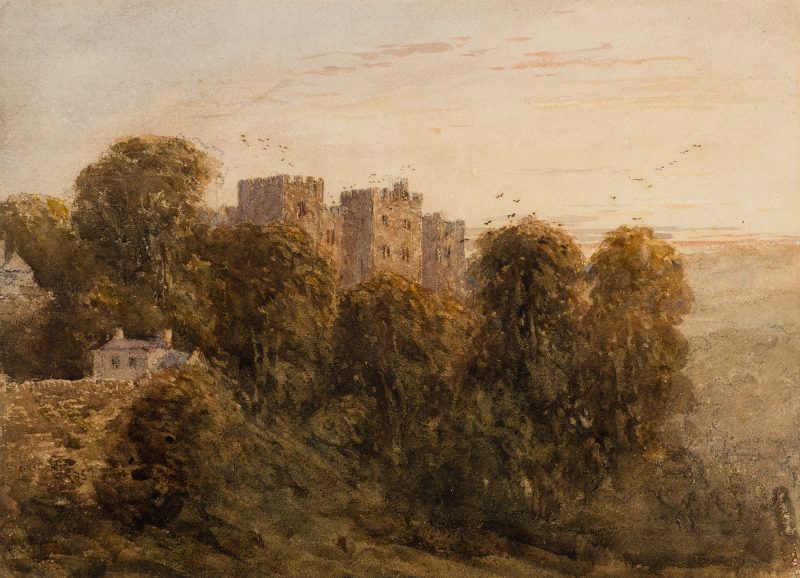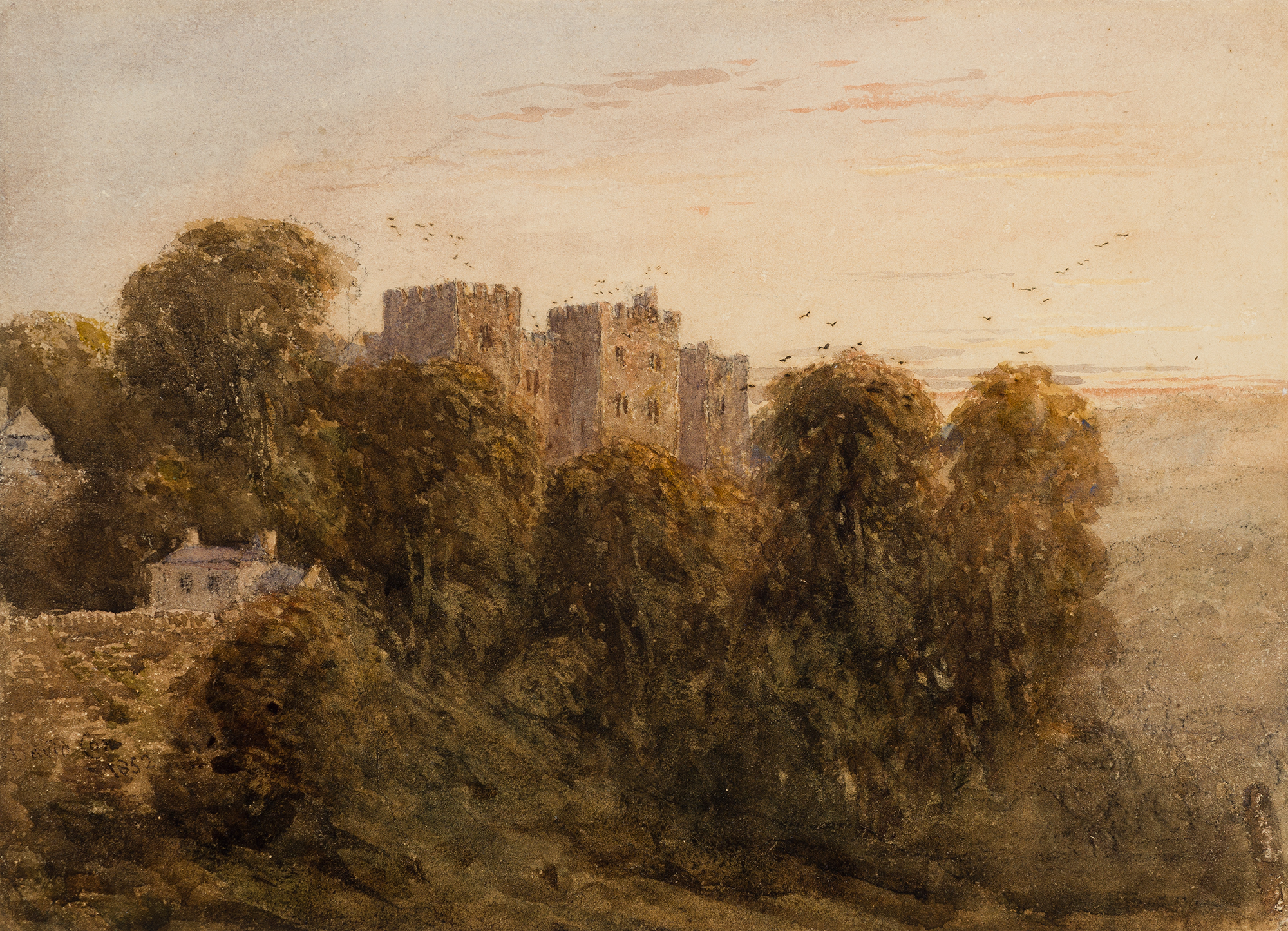
Ludlow Castle
Cox, David
1852
Artwork Information
-
Title:
Ludlow Castle
-
Artist:
Cox, David
-
Artist Bio:
British, 1783–1859
-
Date:
1852
-
Medium:
Watercolor and graphite on paper
-
Dimensions:
10 3/8 x 14 3/8 inches
-
Credit Line:
Wichita Art Museum, Museum purchase, Virginia and George Ablah Fund
-
Object Number:
1988.7
-
Display:
Not Currently on Display
About the Artwork
One of Britain’s most innovative artists of the nineteenth century was David Cox, Sr. (1783-1859). In this masterfully executed watercolor, Cox has painted the strong fortified walls of Ludlow Castle, Shropshire, which, with its tall square crenellated towers, commands the view of the Teme River valley along the border between England and Wales.
The castle was first built in 1086, but the architectural subject matter itself is only of incidental importance. Instead the significance of the work rests largely upon the stylistic elements that it embodies. Cox painted this watercolor in 1852, a late moment in his career by which time his treatment of light, wind and atmospheric effects together closely resembles some of the most distinguishing traits of what today we call Impressionism. And of course, this work pre-dates the earliest French impressionists by more than two decades.
Of much interest, is the fact that the paper on which this work was painted is a wrapping paper discovered by Cox in 1836 and used so extensively by him thereafter that it became known as Cox Paper. It was also known as Scotch paper since it was imported from Dundee, Scotland. Its rough texture seems to partially account for the shimmering effect found in works by Cox during the last several decades of his life. What is of comparable interest here is the fact that, although Cox the artist was surely innovative, he, like many others of his generation, was also extremely traditional in his outlook on life. And as we view this drawing of Ludlow Castle, we clearly witness the work of a man who was deeply responsive to the traditional notion of the sublime in nature, much as that notion had been formulated aesthetically by Edmund Burke nearly a century earlier. The sense of infinity, the steep cliff on which the castle seems so precariously to hang, and the overall all-inspiring mood of the setting together exhibit Burke’s doctrine of the sublime. It is also this sense of the sublime which quite obviously carried the mind toward the idea of God during the era in which Burke wrote and even more so during the disruptive mid-nineteenth century age of religious uncertainty. Indeed, Cox was a conservatively religious man and the concept of the sublime was effective reinforcement of his religious leanings and a fitting guide to the stylistic character of many of his works, especially those produced during his later years.
David Cox was born in 1783 in Birmingham, England, where he took drawing lessons during his early youth. In 1804 he went to London, studied under John Varley, and worked as a scene painter in the theatre. He was married in 1808 and throughout his life he painted extensively in north and west England and in Wales as well as while on several visits to the Continent. In 1841 he returned to Birmingham where he settled permanently but continued to take extensive sketching trips each summer, often with his artist son, throughout England and especially north Wales. He died in Birmingham in 1859.
